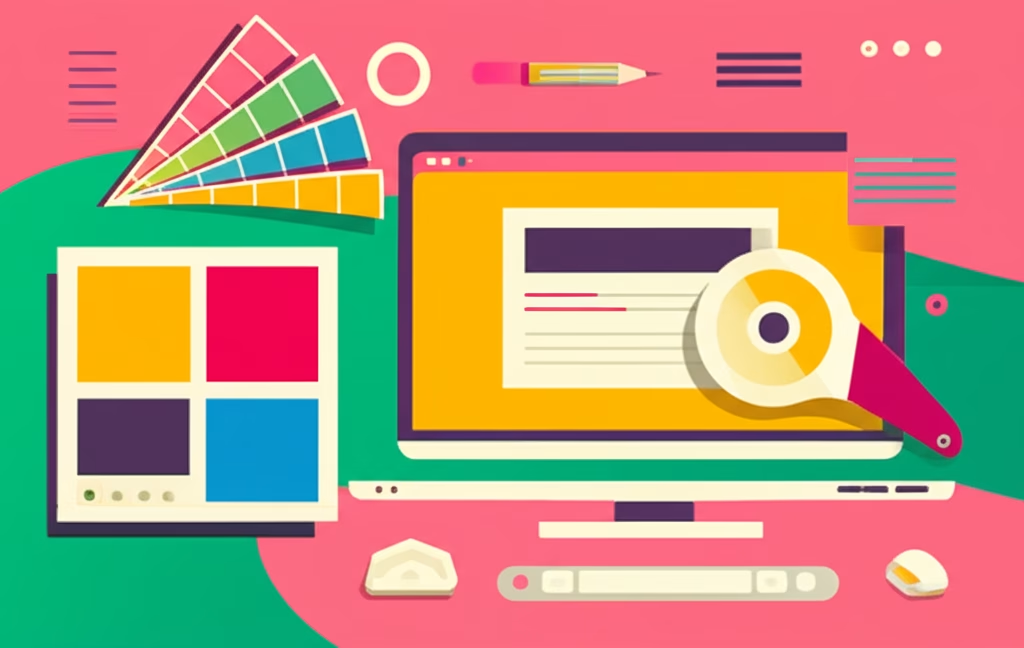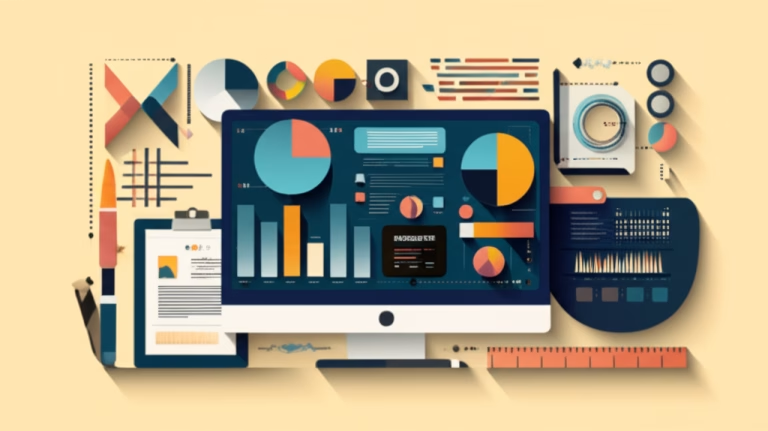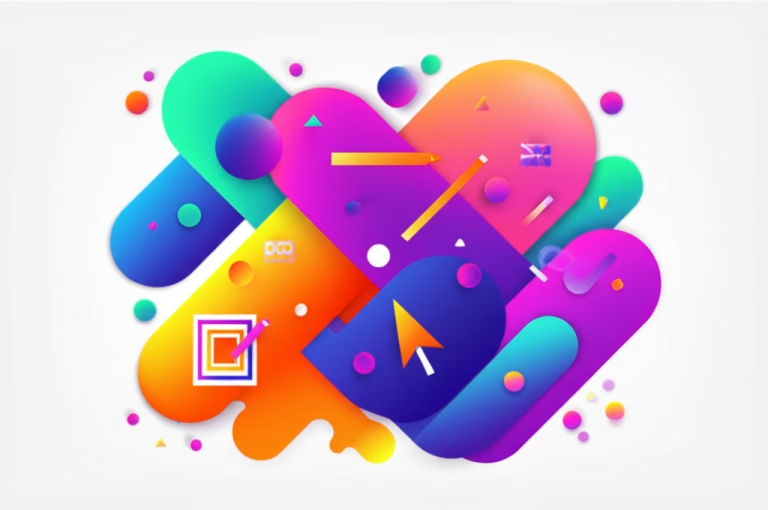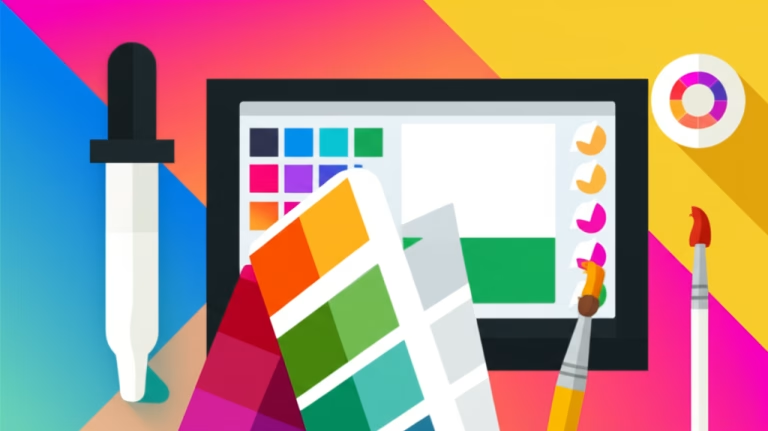Free Design Tools: A Beginner’s Guide
Introduction
Starting your journey in the world of design can feel overwhelming, especially when you’re faced with expensive software. Many beginners believe that you need to spend a fortune on design tools to create something amazing, but that’s simply not true. The good news is that there are many fantastic free design tools available that can help you bring your ideas to life without breaking the bank. This post will show you how to get started with the best free design resources.
In this guide, we’ll explore what free design tools are, why they’re essential for beginners, and how to use them effectively. We’ll also cover common mistakes and provide a step-by-step guide to applying these tools in your projects. Get ready to unlock your creative potential with the power of free design software!
What are Free Design Tools?
Free design tools are software applications and online platforms that allow you to create visual content without paying a subscription fee or a one-time purchase price. These tools cover a wide range of design needs, from graphic design and photo editing to UI/UX design and 3D modeling. They are often supported by advertising, offer limited features compared to their paid counterparts, or operate on an open-source model.
These tools are invaluable for beginners because they provide a risk-free environment to learn and experiment with design principles. You can explore different design styles, practice your skills, and build a portfolio without the financial burden of expensive software. Many free design tools also have active communities and extensive online resources, making it easier to find help and inspiration.
Why are Free Design Tools Important in Design?
Free design tools play a crucial role in democratizing design. They make design accessible to a broader audience, regardless of their financial situation. This is especially important for students, hobbyists, and those who are just starting their careers in design. By removing the financial barrier, these tools encourage more people to explore their creativity and develop their design skills.
These tools also foster innovation and experimentation. When you’re not worried about the cost of software, you’re more likely to try new things and push the boundaries of your creativity. Free design tools often have a simpler interface than paid software, making them easier to learn and use. This allows beginners to focus on the fundamentals of design rather than getting bogged down in complex features.
Basic Principles/Rules/Tools
To make the most of free design tools, it’s essential to understand some basic design principles and rules. Here are a few key concepts to keep in mind:
Color Theory
Understanding color theory is crucial for creating visually appealing designs. Learn about the color wheel, primary and secondary colors, complementary colors, and color harmonies. Use online resources like Adobe Color to explore different color palettes and find inspiration for your projects. Many free design tools offer color picker and palette features to help you apply color theory effectively.
Typography
Typography is the art of arranging type to make written language legible, readable, and appealing. Experiment with different fonts, sizes, and spacing to create visually interesting and effective text. Use resources like Google Fonts to find a wide variety of free fonts that you can use in your designs. Pay attention to hierarchy and readability to ensure that your message is clear and easy to understand.
Layout and Composition
Layout and composition refer to the arrangement of elements on a page or screen. Use principles like the rule of thirds, balance, and contrast to create visually engaging and harmonious designs. Experiment with different layouts and compositions to see what works best for your project. Free design tools often have grid systems and alignment tools to help you create well-structured layouts.
Image Editing
Image editing is an essential skill for any designer. Learn how to crop, resize, and adjust images to improve their quality and appearance. Use free photo editing tools like GIMP or Photopea to enhance your images and create stunning visuals. Pay attention to resolution and file size to ensure that your images look great on all devices.
Popular Free Design Tools
- Canva: A user-friendly graphic design platform with a wide range of templates and design elements.
- GIMP: A powerful open-source image editor that rivals Adobe Photoshop.
- Inkscape: A vector graphics editor that’s perfect for creating logos, illustrations, and icons.
- Figma: A collaborative UI/UX design tool that’s popular among web and app designers.
- Blender: A free and open-source 3D creation suite.
- Photopea: A free online photo editor that supports PSD files.
Common Mistakes (and How to Avoid Them)
Even with the best free design tools, it’s easy to make mistakes when you’re just starting out. Here are some common pitfalls to avoid:
Overusing Fonts
Using too many different fonts in a single design can make it look cluttered and unprofessional. Stick to a maximum of two or three fonts and use them consistently throughout your project. Choose fonts that complement each other and reflect the overall tone and style of your design.
Ignoring White Space
White space, also known as negative space, is the empty space around and between elements in your design. Ignoring white space can make your design feel cramped and overwhelming. Use white space strategically to create balance, improve readability, and draw attention to key elements.
Poor Color Choices
Choosing the wrong colors can ruin an otherwise well-designed project. Avoid using colors that clash or are difficult to read. Use color theory principles to create harmonious and visually appealing color palettes. Test your designs on different devices and under different lighting conditions to ensure that the colors look good in all situations.
Low-Resolution Images
Using low-resolution images can make your designs look blurry and unprofessional. Always use high-resolution images that are appropriate for the intended use. If you’re using images from the internet, make sure they are licensed for commercial use and that you have permission to use them.
Lack of Consistency
Consistency is key to creating a cohesive and professional design. Use the same fonts, colors, and styles throughout your project to create a unified look and feel. Pay attention to details like spacing, alignment, and hierarchy to ensure that your design is consistent and easy to understand.
Step-by-Step: How to Apply Free Design Tools in Your Projects
Now that you understand the basics of free design tools and common mistakes to avoid, let’s walk through a step-by-step guide to applying these tools in your projects:
Step 1: Define Your Project
Before you start designing, take some time to define your project. What are you trying to achieve? Who is your target audience? What is the overall tone and style of your design? Answering these questions will help you make informed design decisions and stay focused throughout the process.
Step 2: Choose the Right Free Design Tool
Select a free design tool that is appropriate for your project. If you’re creating a logo or illustration, Inkscape might be a good choice. If you’re editing photos, GIMP or Photopea could be a better fit. If you’re creating social media graphics, Canva might be the easiest option. Consider the features and capabilities of each tool and choose the one that best meets your needs.
Step 3: Gather Inspiration
Before you start designing, gather inspiration from other designs. Browse websites like Dribbble, Behance, and Pinterest to see what others have created. Pay attention to the colors, fonts, layouts, and styles that you like. Use this inspiration to inform your own designs, but don’t copy anyone else’s work directly.
Step 4: Create a Wireframe or Mockup
Before you start designing in your chosen tool, create a wireframe or mockup of your design. This will help you plan the layout and composition of your design and ensure that all the elements are in the right place. You can create wireframes and mockups using pen and paper or using a free online tool like Figma.
Step 5: Start Designing
Now it’s time to start designing in your chosen free design tool. Begin by adding the basic elements of your design, such as the background, text, and images. Then, start refining the design by adjusting the colors, fonts, and layout. Use the principles of design to create a visually appealing and effective design.
Step 6: Get Feedback
Once you’ve finished your design, get feedback from others. Ask your friends, family, or colleagues to review your design and provide constructive criticism. Use their feedback to improve your design and make it even better. Don’t be afraid to make changes based on the feedback you receive.
Step 7: Export and Share Your Design
When you’re happy with your design, export it in the appropriate format. If you’re creating a logo or illustration, export it as a vector file (SVG or EPS). If you’re creating a photo or graphic, export it as a raster file (JPEG or PNG). Share your design with the world and celebrate your accomplishment!
FAQ Section
Q: What’s the best free design tool for beginners?
A: Canva is often recommended for beginners due to its user-friendly interface and extensive library of templates. It’s great for creating social media graphics, presentations, and other visual content quickly and easily.
Q: Can I use free design tools for commercial projects?
A: Yes, many free design tools allow you to use your creations for commercial purposes, but always check the licensing terms. Some tools may require attribution or have restrictions on certain types of projects.
Q: Are free design tools as good as paid ones?
A: While paid tools often offer more advanced features and capabilities, free design tools can be surprisingly powerful and versatile. For many beginners and smaller projects, they provide everything you need to create professional-quality designs.
Conclusion
Free design tools are an invaluable resource for beginners looking to explore the world of design without financial constraints. By understanding the basic principles of design and utilizing these tools effectively, you can create stunning visuals and bring your ideas to life. Remember to experiment, practice, and seek feedback to continuously improve your skills.
Whether you’re creating social media graphics, logos, or website mockups, free design tools offer a wealth of opportunities to unleash your creativity. Embrace these resources, and you’ll be well on your way to becoming a skilled and confident designer.
Ready to take your design skills to the next level? Check out our free checklist for beginner graphic designers to ensure you’re covering all the essential bases!



